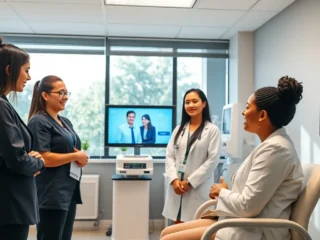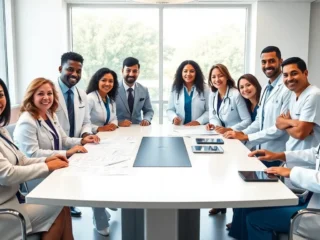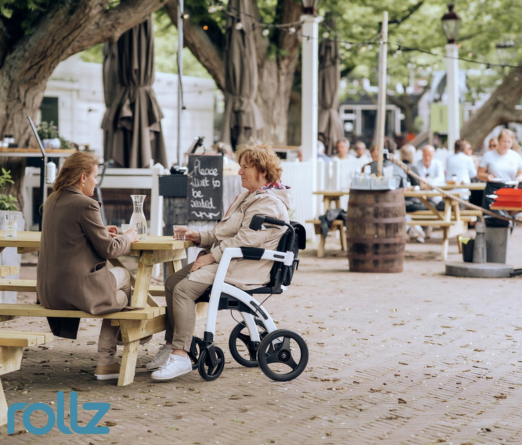
The narrative surrounding aging is rapidly changing. It is no longer just a discussion of passive care or inevitable decline. Instead, we are witnessing a powerful shift towards active thriving—a vision where later life is marked by continued growth, purpose, and engagement.
At the same time, one cannot overlook the many challenges seniors face, be it social isolation, a decline in mental and physical health, or chronic conditions. Finding a renewed sense of purpose after retirement or a significant life change is equally important, though it can be a struggle.
Against this backdrop, truly groundbreaking initiatives are emerging in the USA. Read on to explore five innovative programs, including groundbreaking state-level initiatives like CFSS in MN (Minnesota).
#1 The Encore Fellowship Program – For Purposeful Re-engagement
The Encore Fellowship Program is designed to tap into the vast experience and skills of seasoned professionals by placing them in paid, temporary fellowships with non-profit organizations and social enterprises. It’s a bridge program, allowing individuals nearing or in retirement to transition their careers into the social impact sector.
While the program originated with Encore.org, it operates through various partners and host organizations, offering a nationwide reach with localized opportunities. Unlike volunteer opportunities that can be less structured, Encore Fellowships offer paid, professional roles, typically lasting 6-12 months, allowing seniors to apply their high-level expertise to pressing societal issues.
This approach also combats social isolation by integrating seniors into new work environments and teams, fostering fresh connections and intellectual stimulation. On the other hand, host organizations also cite significant progress on key projects due to the fellows’ expertise, meaning the program not only benefits seniors but also the non-profit sector.
As innovative programs continue to empower seniors to thrive, it’s equally important to acknowledge the moments when aging includes end-of-life considerations. Open and compassionate communication is essential during these times, especially when a loved one enters hospice care. Knowing what to say to someone in hospice can help families and caregivers provide emotional support with sensitivity and grace. Having these conversations with empathy not only honors the person’s dignity but also strengthens bonds and eases the emotional burden for everyone involved.
#2 Oasis Intergenerational Tutoring Program – Combating Isolation and Promoting Lifelong Learning
The Oasis Intergenerational Tutoring Program is a national initiative that recruits, trains, and places older adults as tutors in elementary schools. These dedicated senior volunteers work one-on-one with children, primarily in grades K-4, focusing on improving literacy skills and fostering a love of reading.
For seniors, the regular engagement with children provides purpose, social connection, and mental stimulation, combating loneliness and fostering a sense of continued relevance. For children, they receive individualized attention and a nurturing learning environment that often goes beyond just academics, building confidence and social-emotional skills. This dual-benefit approach creates a vibrant ecosystem of mutual support and learning.
With a presence in numerous cities across multiple states, Oasis has a significant national reach through its network of centers and partners. Seniors frequently report feeling more energized, connected, and purposeful, while teachers consistently observe significant improvements in their students’ reading levels and overall engagement in learning.
#3 Senior Planet – Digital Inclusion and Lifelong Learning
Senior Planet, a flagship program of Older Adults Technology Services (OATS) from AARP, is dedicated to empowering seniors through technology. It offers free, in-person and online courses, workshops, and events that teach older adults essential digital skills, ranging from basic computer literacy to advanced topics like online entrepreneurship and digital art.
The focus is on accessible, practical, and engaging tech education in a supportive environment. What makes it unique is its emphasis on empowerment through practical application, showing seniors how technology can enhance their daily lives, manage health, connect with family, pursue hobbies, and even generate income.
Headquartered in New York City with physical centers in several other states (e.g., California, Maryland, Colorado) and a robust online platform, Senior Planet has a significant national reach, serving seniors across various communities. Senior Planet proves that age is no barrier to mastering new technologies and that digital inclusion is a powerful tool for enhancing well-being and independence in later life.
#4 Villages (Village to Village Network) – Community-Driven Support
The Village concept, championed by the Village to Village Network (VtVN), is a rapidly growing, grassroots, non-profit model where members pay a small annual fee to receive a wide array of support services and social opportunities from a network of vetted volunteers and preferred providers.
These “Villages” are hyper-local, community-driven organizations, meaning their location/reach is highly localized, often serving specific neighborhoods or towns across the USA. With its focus on community-driven support and peer connection, the program empowers seniors to create and manage their own support systems. Members often volunteer for other members, creating a strong sense of community and shared responsibility.
This organic, neighbor-helping-neighbor approach provides a wide range of services – from transportation and minor home repairs to social events and educational programs – all coordinated by and for the members themselves.
#5 Community First Services and Supports (CFSS) – Self-Directed Home and Community-Based Care
Community First Services and Supports (CFSS) is Minnesota’s innovative program designed to empower individuals, including a significant portion of the senior population, with disabilities and chronic conditions to direct their own home and community-based services.
The program’s target demographic includes seniors and other adults with disabilities or chronic conditions who qualify for Medicaid home and community-based services and wish to manage their own care, including hiring and training personal care assistants (PCAs), who can even be family members (excluding spouses).
Unlike traditional approaches where agencies dictate care, CFSS empowers eligible individuals to manage services themselves, deciding who provides care, what services they need, when and where those services are delivered, and how their allocated budget is spent. By allowing seniors to manage their own care, CFSS contributes to their ability to age in place with dignity, maintaining their routines and connections within their chosen communities.
Conclusion
Innovative programs such as those discussed in this article represent how society supports and values its older adults today. They prove that empowering seniors is not merely about providing basic services but about cultivating environments where independence, well-being, and continued engagement can truly flourish.
Looking to the future, the potential for scaling these models is immense. As the senior population continues to grow, there’s an urgent need for more communities to adopt and adapt these successful frameworks. This shift also indicates an evolving role of seniors in society. They are no longer seen as merely a demographic to be cared for. Instead, society is viewing them as a vast, untapped resource of wisdom, experience, and energy, waiting to be unleashed.
Adopting a person-centered, community-integrated, and technology-leveraged approach to care and life, through such initiatives, is indeed redefining what it means to age in America. Investing in programs that empower seniors isn’t just a compassionate choice; it is a strategic imperative for building more vibrant, resilient, and inclusive communities for everyone.














